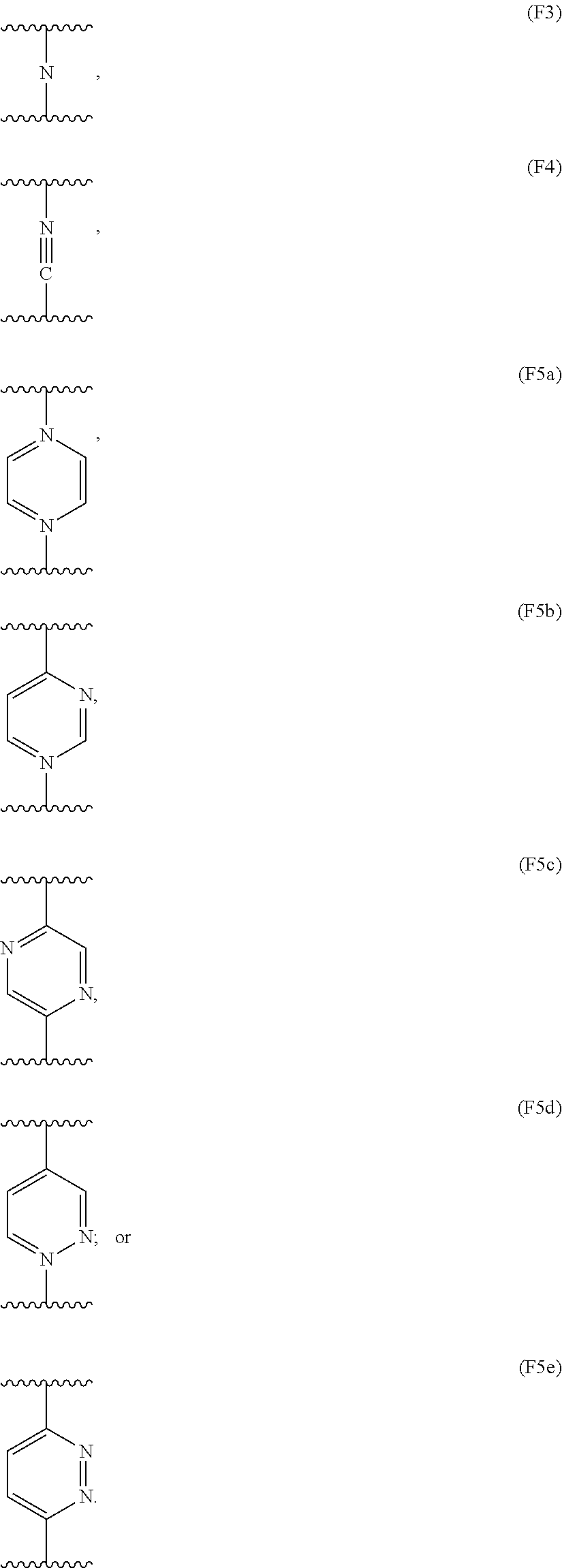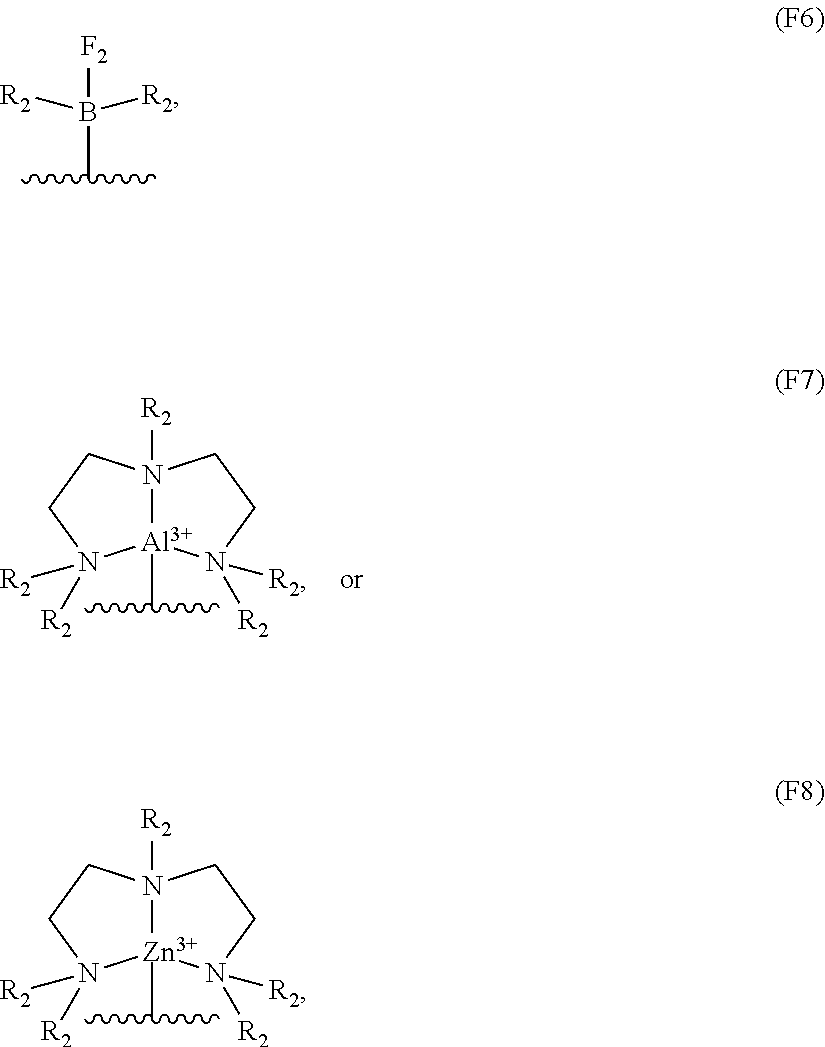High performance inorganic complexes for next-generation redox flow batteries
- Summary
- Abstract
- Description
- Claims
- Application Information
AI Technical Summary
Benefits of technology
Problems solved by technology
Method used
Image
Examples
example 1
REFERENCES CORRESPONDING TO EXAMPLE 1
[0248]1 Department of Energy (2009, May) “President Obama Announces $3.4 billion investment to spur transition to smart grid.” http: / / www.energy.gov / news2009 / 8216.html[0249]2 G. I. Soloveichik, Chem. Rev., 2015, 115, 11533-11558.[0250]3 A. Z. Weber, M. M. Mench, J. P. Meyers, P. N. Ross, J. T. Gostick, Q. Liu, J. Appl. Electrochem., 2011, 41, 1137-1164.[0251]4 “Renewable Energy Integration in Power Grids”, IRENA Technology Brief E15—April 2015, http: / / www.irena.org / Publications[0252]5 R. M. Darling, K. G. Gallagher, J. A. Kowalski, S. Haac, F. R. Brushett, Energy Environ. Sci., 2014, 7, 3459-3477.[0253]6 US DOE OE Energy Storage Program Plan 2011, http: / / energy.gov / sites / prod / files / oeprod / DocumentsandMedia / OE_Energy_Storage_Program_Plan_Feburary_2011 v3.pdf[0254]7 http: / / www.icis.com / chemicals / channel-info-chemicals-a-z / [0255]8 D. Prat, O. Pardigon, H.-W. Flemming, S. Letestu, V. Ducandas, P. Isnard, E. Guntrum, T. Senac, S. Ruisseau, P. Cruciani...
example 2
ducts of Hexacyanoferrate(II): Modifying the Voltage of Reversible Redox Couples
[0256]Access to rare, earth-abundant high voltage reversible redox couples is reported through the synthesis and characterization of novel homoleptic borane adducts of hexacyanoferrate(II). Control over redox properties is established with respect to borane Lewis acidity, reflected in half-wave potential shifts per borane equivalent (secondary ligand) of +250 mV for BPh3 and +380 mV for B(C6F5)3, yielding total half-wave potential shifts of +1.5 V and +2.1 V, respectively, from the parent FeIII / II redox couple. Control over electronic structure is also demonstrated with borane coordination by an observed blueshift in d-d transitions. This technique provides an avenue for discrete modifications to the electronic structures and electrochemical properties of cyanometallates, allowing for the eventual characterization of a library of metal isocyanoborates.
[0257]Few examples of high-voltage, reversible redox ...
example 3
REFERENCES CORRESPONDING TO EXAMPLE 3
[0296]1. G. I. Soloveichik, Chem Rev., 2015, 115, 11533-11558.[0297]2. A. Z. Weber, M. M. Mench, J. P. Meyers, P. N. Ross, J. T. Gostick, Q. Liu, J. Appl. Electrochem., 2011, 41, 1137-1164.[0298]3. R. Dmello, J. D. Milshtein, F. R. Brushett, K. C. Smith, J. Power Sources, 2016, 330, 261-272[0299]4. J. Winsberg, T. Hagemann, T. Janoschka, M. D. Hager, U. S. Schubert, Angew. Chem. Int. Ed., 2017, 56, 686-711[0300]5. R. Marco, Technical University of Lisbon., 2013, 1-14.[0301]6. J. S. Kristoff, D. F. Shriver, Inorg. Chem., 1973, 12, 1788-1793[0302]7. D. F. Shriver, J. Posner, J. Am. Chem. Soc., 1966, 88, 1672-1677[0303]8. J. J. Alexander, H. B. Gray, J. Am. Chem. Soc., 1968, 90, 4260-4271[0304]9. W. E. Buschmann, L. Liable-Sands, A. L. Rheingold, J. S. Miller, Inorganica Chimica Acta., 1999, 284, 175-179[0305]10. H. B. Gray, N. A. Beach, J. Am. Chem. Soc., 1963, 85 (19), 2922-2927[0306]11. S. J. Milder, H. B. Gray, V. M. Miskowski, J. Am. Chem. Soc....
PUM
 Login to View More
Login to View More Abstract
Description
Claims
Application Information
 Login to View More
Login to View More - R&D
- Intellectual Property
- Life Sciences
- Materials
- Tech Scout
- Unparalleled Data Quality
- Higher Quality Content
- 60% Fewer Hallucinations
Browse by: Latest US Patents, China's latest patents, Technical Efficacy Thesaurus, Application Domain, Technology Topic, Popular Technical Reports.
© 2025 PatSnap. All rights reserved.Legal|Privacy policy|Modern Slavery Act Transparency Statement|Sitemap|About US| Contact US: help@patsnap.com



